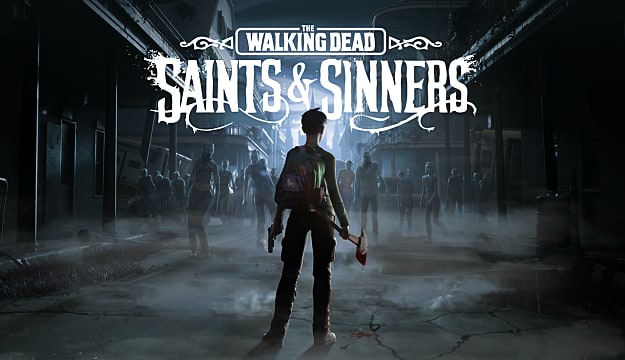

Virtual reality has been on the market for years now, but it still can't seem to climb out of its middling rut. In time, we'll see whether Half-Life: Alyx is the revolution Valve and other VR evangelists hope it is, but we can't see that far in to the future from here.
I've long found myself a believer of the tech and I root for it to succeed, but I'm not blind to its faults. With that in mind, I think The Walking Dead: Saints & Sinners captures my thoughts on VR as a whole pretty well.
It has some body-tracking issues which naysayers will rightfully find to be too familiar an issue with VR setups, but if you've already got a headset at home, The Walking Dead: Saints & Sinners is a can't-miss addition to the wild west of VR.
The Walking Dead: Saints & Sinners Review: Scared, Screwed, and Loving It
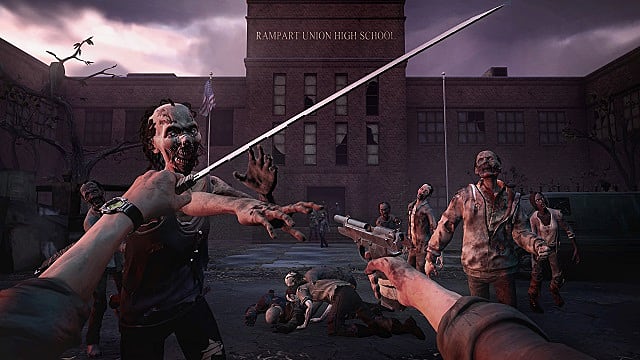
Saints & Sinners puts players in the American deep south as a lone survivor in Robert Kirkman's undead landscape. The first-person game is a mixing pot of several genres, and each of them is awesomely implemented.
Every level exists as a large hub and offers at least one main location you'll want to hit, like an early-level mansion in the dilapidated streets, but there are always countless ways to approach it.
In this first example, I was able to climb through one of several windows, crawl through a crawlspace, search for an unlocked door — which revealed walkers on the other side — or find a key to enter. I could even climb the side of the house and crawl into the upstairs. This gives the game an unexpected immersive sim-like freedom, as though a bit of Deus Ex or Dishonored snuck into this zombie VR title, and it quickly makes it so much better than I expected.
There are RPG elements too. You head out on a skiff by day and scavenge all sorts of scraps while on your missions. Anything from bottles to shoes to broken guns can be thrown into your backpack and you'll need to manage inventory space as it's quite limited given all the scraps scattered about each level. With that in mind, you'll want to know what to bring back with you, and for that, your safe space at an old party bus in a cemetery acts as your crafting hub.
Anything from food and medicine to guns and shivs can be built here with a simple-to-use VR layout. Excitingly, some of the first weapons you can craft are Lucille and Rick's python. These are given different names — I suppose because they're not the real Lucille and python — but the nods are obvious and welcome.
Each level contains at least one friendly human survivor too. You'll have to look for them as they're wisely not broadcasting their whereabouts to the hordes, but find them, and they'll offer trades and give you side quests. These always end with rewards you'll not want to miss. I made it a habit to first inspect a level for these survivors as the backpack space was always worth what they were offering, even if it sometimes meant I had to first get my hands dirty on their behalf.
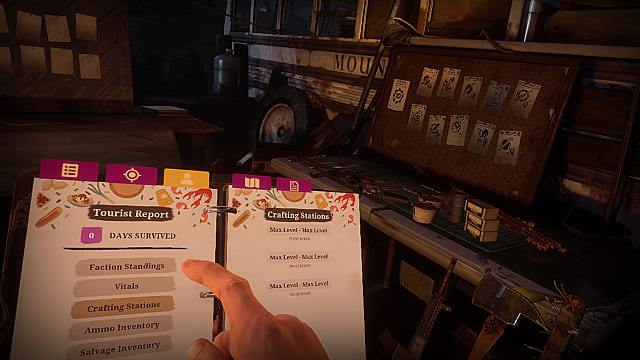
Though it tells an original story in the ever-widening lore bible of The Walking Dead, it retains several important hallmarks that franchise fans will both expect and adore. Namely, the zombies aren't the only threat. As you get deeper into its lengthy 15-hour campaign, you'll have to contend with unfriendly surviving humans too.
No Walking Dead story is complete without a Big Bad either, and Saints & Sinners understands this. Told mostly through collectibles and cutscenes, the story is fun to chase, even as the diary entries often hamper the gameplay with voiceovers that can bury more important sounds, like incoming walkers.
Within each level, you'll have several objectives, optional and mandatory, but you decide how to explore and when you leave. If you only need a specific crafting resource, you can return to any level, grab that one item as soon as you find it, and take off. Conversely, you can stick around until your watch beeps and the church bells ring out through the bayou, inviting a horde to descend upon your location.
It's in these moments where Saints & Sinners best captures the feeling of surviving in its harsh world. Before the church bells ring, a level will have dozens of walkers, but they're somewhat spread out. You'll often have to fight two at a time — three at a time is thankfully rare — but that's about it unless you choose to Pied Piper them around town (don't do that).
But once the bells go off, your survival odds dwindle to nearly nonexistent. Half a dozen or more walkers at any time can surround you, and if your shots are off or you miss a killing blow to the brain, you're screwed.
This makes stealth actions, like crouching past the gaze of the undead, crucial, and even more important is managing your health and stamina. Cruelly, most of the game's healing items will either raise health or stamina, but lower the other, giving players a personal puzzle to work out: "when do I eat this energy bar to boost stamina knowing it will hurt my health at the same time?" I asked that question a lot, and for me, the answer was usually, "when I need to get the hell out of here."
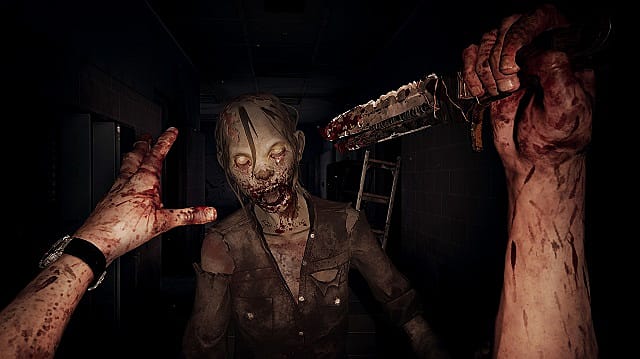
Saints & Sinners is exhilarating in these moments, like a mad dash to the skiff with a full backpack as the ominous bells ring out.
The game's PSVR controls are smartly mapped onto the mandatory wands, but tracking of movements is sometimes faulty, leading to some annoying game-over screens. As this is true Walking Dead, nothing short of a blow to the head will stop the zombies from eating you, and while guns and, to a lesser extent, two-handed weapons, are reliable and fun, one-handed melee weapons are more troubling.
In the loading screens, the game reminds players that penetrating the brain requires methodical movements, not swift ones, and though I got better at this motion over time, I still missed more often than what felt fair.
A whiffed killshot means the zombies grab you and you have to shake them off, taking some lost health in the process. With a horde of a few zombies, it is often the case that once one grabs you, you get stuck in a loop where you're shoving them all off one by one until you're dead. Thankfully, the penalty for death is minimal. You keep level progress and must retrieve your loot before dying again.
Cheap player death is supremely unsatisfying and reminds me how much further VR has to go. I don't know how long I'd last in a real zombie apocalypse, but I know I failed some killing blows in Saints & Sinners merely because of faulty movement tracking. A real zombie kill shouldn't seem easier than my virtual attempts, but it often feels that way.
Luckily, the rest of the controller layout is intuitive. It smartly combines the 45-degree turns seen in so many VR games with headset directing for an experience that never turned my stomach. Controls like holstering quick-equip weapons and pulling out a flashlight, journal, or backpack never failed me. Only some melee weapons did, but that's an important part of a game about stabbing zombies in the brain. These controls won't leave you nauseated, only aggravated.
Even when this did get annoying, it is sometimes easy to forgive a game that lets you smash a bottle against a car to make a last-ditch defensive item, or demands you really yank on the barbed wire bat to pull it out of the freshly killed walkers.
Other than those moments of poor tracking, Saints & Sinners delivers an immersive zombie survival VR experience. It has a sense of presence as only VR can provide, like the dread of a walker spotting me as I peer around the "corner" in my living room.
Saints & Sinners has the gameplay loop of my all-time favorite zombie game, State of Decay: head into a dangerous world, take what you can to survive, and try to make it home to stash it all, slowly building up your arsenal to take on greater threats. That loop is made more exciting in VR, though I can't deny it's sometimes thwarted by the headset and wands too.
The Walking Dead: Saints & Sinners Review — The Bottom Line
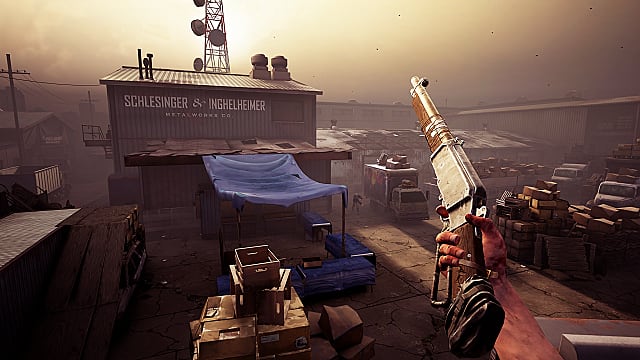
Pros
- Open level design driving player choice
- Well-implemented RPG elements like streamlined crafting and inventory management
- True horror tension without crippling death penalties
- Side quests and NPC interactions add replayability
- The church bells!
Cons
- Audio logs drown out more important sounds, like incoming walkers
- Arm tracking issues result in cheap deaths
At the end of my time with The Walking Dead: Saints & Sinners, I decided I wasn't actually done with it at all. I'll be playing it for a long time as I continue to max out my upgrades and finish all side quests. I've been playing VR for several years now, and I've seen my share of games that lift the medium up and remind me of what the future holds for this platform.
Suffice it to say Saints & Sinners definitely suffers from some modern-day VR problems, but it's still a great sign of the immersive and exciting things to come. After weighing it against all else I've played on PSVR to date, I've determined Saints & Sinners is my favorite VR game of the generation.
[Note: A copy of The Walking Dead: Saints & Sinners was provided by Skydance Interactive for the purpose of this review.]
0 comments:
Post a Comment